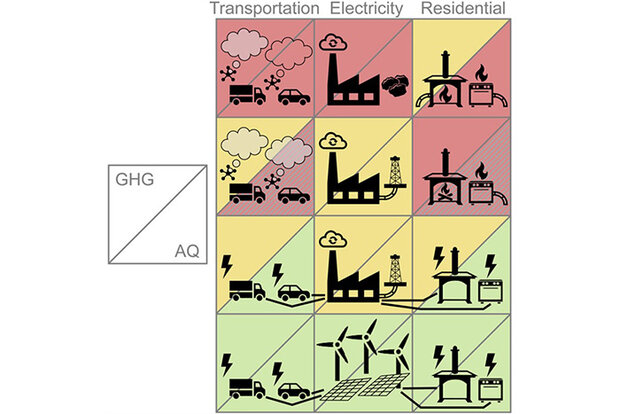Climate mitigation policies for cities must consider air quality impacts

The same processes often emit both greenhouse gas (GHG) and pollutants affecting air quality (AQ). Credit: NOAA

The same processes often emit both greenhouse gas (GHG) and pollutants affecting air quality (AQ). Credit: NOAA
Urban areas that constitute only three percent of the Earth’s land surface but accommodate almost half of the global population, are thought to contribute almost 75% of the global carbon dioxide emission. Air pollutants like nitrogen oxides (NOx), sulfur oxides (SOx), carbon monoxide (CO) and particulate matter (PM) are coemitted along with carbon dioxide (CO2) from the combustion of fossil and biofuels used in energy production. Secondary pollutants like ozone and additional secondary PM are formed when primary pollutants are photolyzed by sunlight and oxidized in the atmosphere. Together, these pollutants not only cause an increase in mortality, respiratory distress, cancer rates and adverse effects on cardiovascular systems, but also damages crops and shunts plant growth. Thus, a reduction of air pollution in cities can reduce the number of premature deaths, improve the life of millions of people and mitigate climate impacts of CO2 emissions.
Read more at the link below.